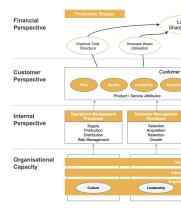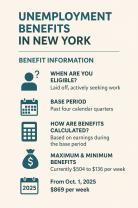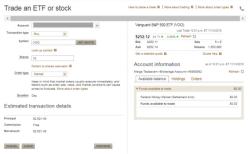What are the basics of forex trading?
Forex trading, or foreign exchange trading, involves the buying and selling of currencies in the global currency market. It is the largest and most liquid financial market in the world. Here are the basics of forex trading for beginners:
1. Understanding the Forex Market:
- The forex market operates 24 hours a day, five days a week, due to the global nature of currency trading.
- Major trading centers include London, New York, Tokyo, and Sydney, creating a continuous market cycle.
2. Currency Pairs:
- In forex trading, currencies are traded in pairs, such as EUR/USD (Euro/US Dollar) or USD/JPY (US Dollar/Japanese Yen).
- The first currency in the pair is the base currency, and the second is the quote currency. The exchange rate tells you how much of the quote currency you need to buy one unit of the base currency.
3. Bulls and Bears:
- A "bull market" occurs when prices are rising, indicating optimism.
- A "bear market" occurs when prices are falling, indicating pessimism.
4. Long and Short Positions:
- Going "long" means buying a currency with the expectation that its value will rise.
- Going "short" means selling a currency with the expectation that its value will fall.
5. Bid and Ask Price:
- The bid price is the price at which the market (or your broker) will buy a specific currency pair.
- The ask price is the price at which the market (or your broker) will sell a specific currency pair.
6. Spread:
- The spread is the difference between the bid and ask prices. It represents the broker's profit in the trade.
7. Leverage:
- Leverage allows traders to control a larger position with a smaller amount of capital.
- While it magnifies profits, it also increases the risk of losses.
8. Margin:
- Margin is the amount of money required to open a leveraged position.
- It is expressed as a percentage of the full position size.
9. Pip and Lot:
- A "pip" (percentage in point) is the smallest price move that a given exchange rate can make.
- A "lot" is a standardized trading size, and a standard lot is usually 100,000 units of the base currency.
10. Risk Management:
- Proper risk management is crucial. This includes setting stop-loss orders to limit potential losses.
- Traders should only risk a small percentage of their trading capital on each trade.
11. Analysis:
- Traders use two main types of analysis: fundamental analysis (examining economic indicators, interest rates, etc.) and technical analysis (studying charts, patterns, and indicators).
12. Demo Trading:
- Before trading with real money, it's recommended to practice with a demo account to gain experience without financial risk.
13. Brokers:
- Choose a reputable forex broker. Consider factors such as regulation, fees, available currency pairs, and trading platforms.
14. Economic Indicators:
- Pay attention to economic indicators like GDP, inflation rates, and employment figures, as they can impact currency values.
15. Continuous Learning:
- Forex markets are dynamic and influenced by various factors. Continuously educate yourself about market trends, news, and strategies.
16. Tax Implications:
- Be aware of tax implications in your country. Forex trading profits and losses may be subject to taxation.
Forex trading involves significant risk, and it's important for beginners to approach it with caution. Developing a solid understanding of the basics, using risk management strategies, and gaining practical experience through demo trading can contribute to a more informed and responsible approach to forex trading.
Diving into currency markets: What are the basics of forex trading?
Forex trading, also known as currency trading, is the buying and selling of currencies on the foreign exchange market. It is the largest financial market in the world, with a daily trading volume of over $5 trillion.
In forex trading, currencies are traded in pairs. For example, the EUR/USD currency pair represents the exchange rate between the euro and the US dollar. A trader who believes that the euro will appreciate against the US dollar would buy the EUR/USD currency pair. A trader who believes that the euro will depreciate against the US dollar would sell the EUR/USD currency pair.
Introduction to fundamental concepts and practices in the foreign exchange market
Here are some fundamental concepts and practices in the foreign exchange market:
- Currency pairs: Currencies are traded in pairs on the forex market. The most popular currency pairs include the EUR/USD, USD/JPY, GBP/USD, and USD/CHF.
- Pip: A pip is the smallest unit of price movement in forex trading. For most currency pairs, one pip is equal to 0.0001.
- Bid price: The bid price is the highest price that a buyer is willing to pay for a currency pair.
- Ask price: The ask price is the lowest price that a seller is willing to sell a currency pair for.
- Spread: The spread is the difference between the bid price and the ask price. The spread is how forex brokers make money.
- Leverage: Leverage allows traders to control large positions with a relatively small investment. However, leverage also increases the risk of loss.
- Margin: Margin is the amount of money that a trader must deposit into their account in order to open a leveraged position.
- Stop-loss order: A stop-loss order is an instruction to a broker to close a position at a specific price, in order to limit losses.
- Take-profit order: A take-profit order is an instruction to a broker to close a position at a specific price, in order to lock in profits.
Tips for beginners in understanding and navigating the basics of forex trading
Here are some tips for beginners in understanding and navigating the basics of forex trading:
- Educate yourself. There are many resources available to help you learn about forex trading. Read books, articles, and blog posts on the subject. Watch forex trading videos and webinars.
- Start with a demo account. A demo account allows you to practice forex trading with virtual money. This is a great way to learn about the forex market and to test out different trading strategies without risking any real money.
- Use leverage carefully. Leverage can be a powerful tool, but it can also be dangerous if used improperly. Only use leverage that you can afford to lose.
- Set stop-loss and take-profit orders. This will help you to limit your losses and to lock in profits.
- Be patient and disciplined. Forex trading is not a get-rich-quick scheme. It takes time and discipline to become a successful forex trader.
Forex trading can be a profitable way to invest, but it is important to understand the risks involved. Before you start trading with real money, make sure that you have a good understanding of the basics of forex trading and that you have a sound trading strategy.













